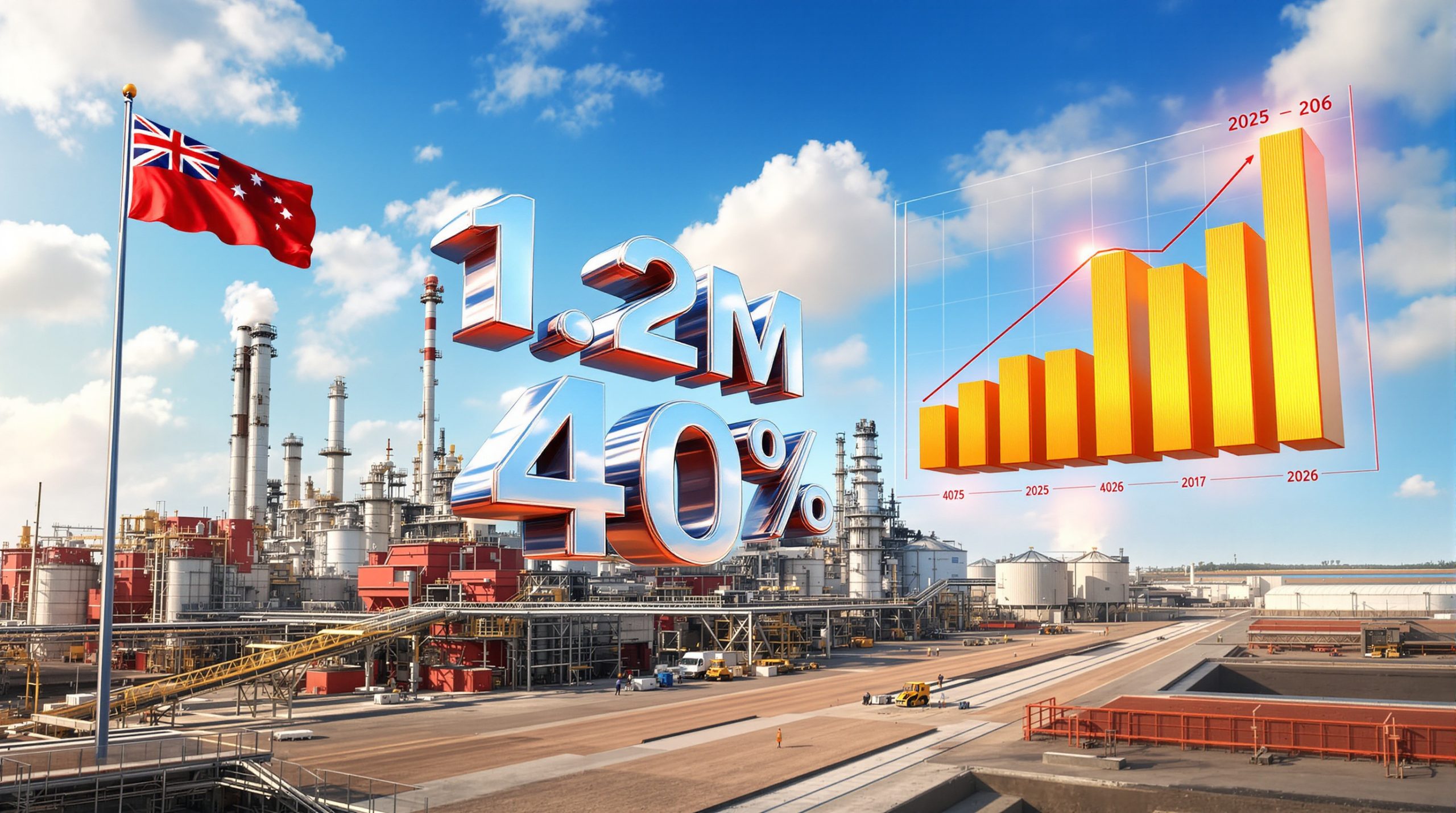Understanding the Global Oil Market Landscape
In today's volatile energy landscape, oil prices continue to fluctuate in response to a complex interplay of global factors. From geopolitical tensions to fundamental supply-demand dynamics, understanding what drives the oil market has never been more crucial for investors, policy makers, and energy consumers alike.
Geopolitical Tensions and Trade Conflicts
The ongoing trade disputes between major economies have cast a significant shadow over global oil markets. Recent data shows oil prices dropped more than 2% following escalations in trade wars between the United States and China, with traders concerned about potential impacts on global economic growth. When major economies engage in tariff battles, manufacturing activity tends to slow, directly reducing industrial fuel consumption.
Historical analysis reveals that previous trade conflicts have typically resulted in oil price volatility periods lasting 3-6 months, with price drops averaging 15-20% during acute phases. The current tensions are particularly significant as they involve the world's two largest oil consumers.
In addition to trade wars, regional conflicts in oil-producing areas create supply uncertainties that ripple through markets. The Middle East remains particularly vulnerable, with approximately 30% of global oil supply flowing through the Strait of Hormuz, a chokepoint that becomes increasingly relevant during periods of regional instability.
Key impact factors include:
- Disruptions to established trade routes and shipping lanes
- Increased insurance costs for tankers operating in conflict zones
- Potential sanctions affecting producer nations' market access
- Reduced investment in exploration and production in uncertain regions
Supply and Demand Fundamentals
Current global production levels show significant variance among major oil-producing nations. The United States continues its strong output at approximately 13.1 million barrels per day, while OPEC+ members maintain strategic production adjustments to balance market supply.
Consumption patterns reveal growing divergence between developed and developing economies:
| Region Type | Current Consumption Trend | Growth Rate |
|---|---|---|
| Developed Economies | Plateauing/Declining | -0.5% to +0.5% |
| Developing Economies | Increasing | +2.5% to +4.0% |
| Asia-Pacific | Strong Growth | +3.5% to +5.0% |
Seasonal factors consistently influence oil demand, with Northern Hemisphere winter heating oil requirements and summer driving season creating predictable but significant demand fluctuations. Current inventory levels serve as critical indicators of market balance, with rising stockpiles typically signaling oversupply conditions that pressure prices downward.
"The fundamental relationship between supply and demand remains the most reliable predictor of long-term price trends, though short-term volatility is increasingly driven by speculation and geopolitical news cycles." – Energy market analyst perspective
How Are US Oil Stockpiles Influencing Market Sentiment?
The United States occupies a unique position in global oil markets as both a major producer and consumer, making its inventory data particularly influential in setting market direction and sentiment.
Recent Inventory Data Trends
Analysis of the latest industry reports indicates rising US crude oil inventories, contributing significantly to recent bearish price movements. WTI crude traded near $60 per barrel while Brent closed below $65, reflecting market concerns about potential oversupply conditions. Weekly stock changes reported by both the American Petroleum Institute (API) and the Energy Information Administration (EIA) consistently show inventory builds exceeding analyst expectations.
The Strategic Petroleum Reserve (SPR) status has also evolved significantly, with policy decisions to release strategic stocks influencing market dynamics analysis. Following several large-scale releases in recent years, the SPR's current capacity utilization stands at multi-decade lows, reducing its market-calming potential during supply disruptions.
Current inventory levels compared against five-year averages show concerning trends:
- Crude oil stocks: 4% above five-year average
- Gasoline inventories: 2.5% above seasonal norms
- Distillate fuels: Near five-year average levels
- Total petroleum products: 3% above typical seasonal patterns
These elevated inventory levels reflect both robust domestic production and softening demand growth, creating persistent downward pressure on prices.
Storage Capacity Concerns
Regional storage utilization rates across key US hubs reveal important market dynamics. Cushing, Oklahoma—the delivery point for WTI crude futures—currently reports approximately 65% capacity utilization, providing sufficient headroom before physical constraints impact pricing. However, Gulf Coast storage facilities are approaching 75% utilization, creating potential bottlenecks for imported crude.
Transportation infrastructure limitations further complicate the storage equation:
- Pipeline capacity constraints between production regions and refining centers
- Rail transportation costs affecting the economics of moving landlocked crude
- Marine terminal congestion during high-volume export periods
- Seasonal maintenance schedules limiting storage flexibility
Storage concerns directly impact pricing dynamics through contango and backwardation market structures. When near-term storage pressures mount, contango conditions (where future prices exceed spot prices) typically emerge, reflecting the costs of holding inventory.
What Economic Indicators Are Shaping Oil Market Outlook?
Economic data serves as the foundation for oil demand forecasts, with specific indicators providing crucial insights into future consumption patterns.
Consumer Confidence Metrics
Recent consumer confidence measurements have fallen to near five-year lows, a troubling development for transportation fuel demand. Research demonstrates a strong correlation between consumer sentiment and discretionary travel, with every 5-point drop in confidence indexes historically corresponding to approximately 1.2% reduction in gasoline consumption over the following quarter.
Leading consumer sentiment indicators for oil markets include:
- Consumer confidence indexes (Conference Board, University of Michigan)
- Retail sales data (particularly automotive and travel categories)
- Employment figures (especially in transportation-intensive sectors)
- Housing market activity (driving fuel consumption for moving and commuting)
Regional variations in consumer economic outlook create divergent demand patterns. While North American consumer sentiment has recently weakened, Asian markets continue showing relative strength, supporting global demand despite Western concerns.
GDP Growth Projections
The expected US economic growth slowdown has significant implications for energy demand. For every percentage point reduction in GDP growth, industrial energy consumption typically contracts by 0.7-0.9%, with particular vulnerability in manufacturing, construction, and freight transportation sectors.
Global economic health indicators relevant to oil consumption show mixed signals:
| Region | Current GDP Growth | Oil Demand Impact |
|---|---|---|
| North America | Slowing (1.5-2.0%) | Moderately Negative |
| Europe | Stagnant (0.5-1.0%) | Negative |
| China | Moderating (4.5-5.0%) | Slightly Positive |
| India | Strong (6.0-7.0%) | Strongly Positive |
| Southeast Asia | Solid (4.0-5.0%) | Positive |
Sector-specific growth patterns affecting industrial fuel usage reveal transportation and petrochemicals as the most significant demand drivers. Manufacturing PMI (Purchasing Managers' Index) readings below 50 in major economies signal contracting industrial activity, typically preceding reduced diesel and fuel oil consumption by 1-2 months.
Economic data releases trigger market volatility with predictable patterns. Employment reports, GDP announcements, and manufacturing indexes typically generate price movements of 1-3% on release days, with effects magnified when data significantly differs from consensus forecasts.
What Are Current Price Benchmarks Telling Us?
Oil price benchmarks provide essential signals about regional supply-demand balances and market sentiment. Understanding the relationship between key benchmarks offers valuable insights for market participants.
WTI vs. Brent Spread Analysis
Current price levels show WTI crude trading near $60 per barrel while Brent crude hovers below $65, creating a spread of approximately $5. This spread remains within historical norms but has narrowed from previous quarters, suggesting improving export capacity for US crude.
Historical context helps interpret the current spread:
| Time Period | Average WTI-Brent Spread | Market Conditions |
|---|---|---|
| 2010-2014 | $1-3/barrel | Limited US exports |
| 2015-2020 | $3-7/barrel | Growing US exports |
| 2021-Present | $2-6/barrel | Mature export capacity |
Regional factors causing benchmark divergence include:
- Transportation costs between production regions and demand hubs
- Quality differentials (sulfur content, API gravity)
- Regional refining capacity and configuration
- Export infrastructure limitations and bottlenecks
Trading strategies based on benchmark relationships commonly focus on spread compression/expansion trades, calendar spreads between contract months, and quality spreads between similar crude types in different regions.
Technical Price Patterns
Key support and resistance levels in current trading ranges provide important guideposts for market participants. For WTI crude, significant support exists at $58.50, with resistance at $62.75. Brent crude shows support at $63.20 and resistance at $67.40. These levels represent areas of historical buying and selling activity that often influence market direction.
The significance of three-week lows in oil prices shouldn't be underestimated. Historical analysis shows that when prices reach new three-week lows, they continue lower approximately 65% of the time, making this a statistically significant technical signal.
Volume indicators provide additional context for price movements:
- Above-average volume during price declines confirms bearish sentiment
- Below-average volume during rallies suggests limited conviction
- Volume spikes at technical levels often indicate institutional activity
- Declining volume during price consolidation typically precedes breakout moves
Seasonal price patterns, while not perfectly reliable, show historical tendency for strength from February through May, weakness in late summer, and volatility in the fourth quarter—though geopolitical events and economic shifts can easily override these patterns.
How Are OPEC+ Policies Affecting Market Stability?
The Organization of Petroleum Exporting Countries and its allies (OPEC+) continue playing a crucial role in global oil market stability through coordinated production policies.
Production Quota Compliance
Current OPEC+ agreement terms establish production targets for member nations, with overall compliance averaging approximately 85-90% in recent months. Individual member production performance varies significantly, with smaller producers typically showing higher compliance rates than larger members with greater fiscal pressures.
Compliance monitoring involves both self-reporting and independent verification through shipping data, satellite imagery, and third-party assessments. Regular ministerial meetings evaluate market conditions and adjust policy accordingly, with the coalition demonstrating increased responsiveness to changing market dynamics.
Non-OPEC producer coordination has evolved significantly, with Russia's integration into the decision-making framework creating a more powerful and cohesive market management mechanism. Market expectations for upcoming OPEC+ meetings significantly influence pre-meeting price action, with statements from key ministers often telegraphing policy direction.
Strategic Production Adjustments
OPEC+ response mechanisms to price volatility have become increasingly sophisticated, with the group demonstrating ability to implement both emergency and scheduled adjustments. The coalition maintains approximately 3-4 million barrels per day of spare production capacity, primarily concentrated in Saudi Arabia, UAE, Kuwait, and Russia.
This spare capacity serves multiple strategic purposes:
- Providing supply cushion during disruption events
- Creating effective price floors through production cuts
- Enabling gradual market share recapture when conditions improve
- Maintaining long-term relevance in an evolving energy landscape
Communication strategies and market signaling have become increasingly important tools. "Jawboning" by key ministers often moves markets without actual production changes, while strategic leaks about policy discussions shape market psychology ahead of formal decisions.
"OPEC+ has evolved from a reactive organization to a proactive market manager, with greater emphasis on data analysis and flexible response mechanisms than in previous decades."
What Role Do Alternative Energy Sources Play in Oil Market Dynamics?
The energy transition creates significant long-term implications for oil markets, with renewable growth and transportation electrification gradually reshaping demand patterns.
Renewable Energy Growth Trends
Impact of renewable energy adoption on oil demand forecasts remains relatively modest in the near term but grows significantly in longer horizons. While renewable electricity generation primarily displaces coal and natural gas rather than oil, the broader energy transition influences investment patterns and policy priorities affecting petroleum markets.
Investment shifts between traditional and alternative energy sectors show major oil companies allocating 15-25% of capital expenditure to renewable and low-carbon initiatives, reducing investment in traditional exploration and production. This capital reallocation may eventually constrain supply growth, potentially supporting prices even as demand growth slows.
Policy incentives across major economies continue accelerating energy transition timelines:
- Carbon pricing mechanisms in Europe and expanding globally
- Renewable portfolio standards requiring minimum clean energy percentages
- Tax incentives for renewable investment and generation
- Research and development funding for breakthrough technologies
Technology advancements changing energy consumption patterns include efficiency improvements in internal combustion engines, lightweight materials reducing fuel requirements, and digital technologies optimizing energy use across industrial applications.
Electric Vehicle Market Expansion
Current EV adoption rates have reached approximately 14% of new vehicle sales globally, with significant regional variation. China leads with over 25% EV market share, followed by Europe at approximately 20% and North America at 7-8%. These adoption rates continue accelerating as battery costs decline and model availability expands.
Oil demand displacement calculations show each million EVs on the road reduces oil demand by approximately 15,000-20,000 barrels per day. With global EV fleet now exceeding 25 million vehicles, this represents approximately 400,000-500,000 barrels per day of avoided demand—still modest compared to the 100+ million barrel daily global market, but growing rapidly.
Infrastructure development supporting transportation electrification continues at varying paces:
| Region | Charging Infrastructure Status | Growth Rate |
|---|---|---|
| China | Advanced | 35%+ annually |
| Europe | Developing Rapidly | 25-30% annually |
| United States | Uneven Development | 20-25% annually |
| Developing Markets | Early Stage | Varies widely |
Regional policies accelerating EV market growth include Norway's plan to end internal combustion vehicle sales by 2025, the UK and EU targeting 2035, and various US states implementing zero-emission vehicle mandates with timelines between 2030-2040.
How Are Traders Positioning in the Current Market?
Professional trading activity provides important signals about market direction and sentiment, with positioning data offering insights unavailable through price action alone.
Futures Market Sentiment Analysis
Current speculative versus commercial positioning shows managed money (hedge funds, etc.) holding net short positions in crude oil futures for the first time in twelve months. This positioning reflects growing concern about economic slowdown affecting demand. Commercial entities (producers, refiners, airlines) maintain hedging programs relatively unchanged, suggesting industry consensus around current price levels.
Open interest trends across key contract months show concentration in near-term deliveries, indicating trader preference for liquidity and shorter-term exposure given current uncertainties. Money manager net positions have historically provided contrary indicators at extremes, with excessive bullishness or bearishness often preceding market reversals.
Options market signals reveal growing demand for downside protection, with put option premiums increasing relative to calls. Volatility indicators suggest the market anticipates continued price fluctuation, with implied volatility readings exceeding historical volatility—a sign of trader anxiety about future price movements.
Risk Management Strategies
Hedging activities among producers and consumers show divergent approaches based on price outlook. Producers have increased hedging programs to lock in current prices, protecting against further declines. Meanwhile, large consumers (airlines, shipping companies) have reduced hedge ratios, betting on potential further price declines.
Correlation with other asset classes during economic uncertainty reveals strengthening relationships between oil prices and equity markets, with both responding similarly to economic growth concerns. Traditional safe-haven assets like gold and Treasury bonds have shown inverse correlation to oil prices during recent market stress.
Liquidity conditions across various oil-linked instruments remain robust for major benchmarks but show signs of deterioration in certain derivative markets and less-traded physical grades. Bid-ask spreads have widened modestly, indicating increased transaction costs during periods of heightened uncertainty.
Algorithmic trading impacts on short-term price movements continue growing in significance, with high-frequency strategies now estimated to represent 50-60% of trading volume in front-month futures. These automated systems often amplify momentum in both directions, contributing to short-term volatility while typically having minimal impact on longer-term price trends.
What Are the Forecasts for Oil Prices in Coming Months?
While no forecast can guarantee accuracy in volatile markets, consensus projections and seasonal factors provide valuable context for market participants.
Analyst Consensus Projections
Range of price forecasts from major financial institutions shows significant divergence, reflecting uncertainty in current conditions. The median forecast for WTI crude centers around $65-70 per barrel for the coming quarter, with outliers ranging from $55 to $80. This wide range demonstrates the unusual degree of uncertainty in current oil market news.
Factors creating divergence in outlook among analysts include:
- Differing assumptions about economic growth trajectories
- Varying estimates of OPEC+ policy responses
- Disagreement about US production growth rates
- Different weightings assigned to geopolitical risk factors
Revision patterns following recent economic data show analysts trending toward more conservative projections, with several major institutions reducing price targets by $3-5 per barrel over the past month. Probability assessments for various price scenarios indicate approximately 60% likelihood of prices remaining within $55-75 per barrel range, with 25% probability of falling below that range and 15% chance of exceeding it.
Seasonal Factors Affecting Near-Term Outlook
Driving season demand expectations for the upcoming summer months suggest approximately 1.2-1.5 million barrels per day of additional gasoline consumption in developed markets, though recent data indicates this seasonal pattern may be weakening due to changing work patterns post-pandemic.
Refinery maintenance schedules and throughput projections show typical spring maintenance winding down, with utilization rates expected to increase 3-5 percentage points in coming weeks. This increased throughput will boost
Ready to Spot the Next Major Mineral Discovery?
Discover how significant ASX mineral discoveries can lead to substantial market returns by exploring Discovery Alert's dedicated discoveries page, powered by the proprietary Discovery IQ model that delivers real-time alerts and actionable insights to position investors ahead of the market. Begin your 30-day free trial today at https://discoveryalert.com.au/discoveries/.




